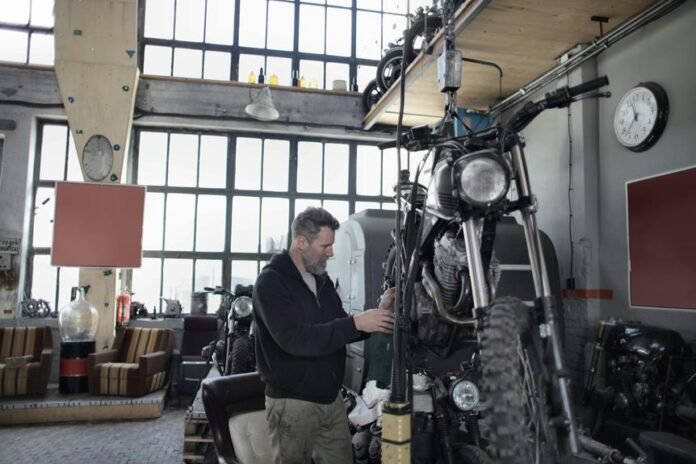Russia's strategic aircraft production is critically impacted by inadequate production capacity, reliance on outdated methods hindering new aircraft development, and technological obsolescence affecting key models like the Tu-22M3 and Tu-160. Supply chain disruptions due to the lack of Western components and dependence on Soviet-era parts further exacerbate the crisis, with sanctions adding to operational challenges. Uncertainty looms over the future prospects for Russia's aviation industry, risking geopolitical influence and military innovation. To address these pressing issues and navigate the complexities ahead, urgent modernization strategies and sustainable production frameworks are imperative.
Production Capacity Shortfalls
The insufficiency of production capacity in Russian strategic aircraft manufacturing has become a critical obstacle affecting the nation's aviation industry. Current production techniques are constrained, limiting output to a few transport and tactical aircraft annually.
To address this challenge, modernization strategies must be implemented to enhance production capabilities. The reliance on outdated Soviet-era methods hampers the development of new aircraft, resulting in a stagnation of the industry.
Without significant improvements in production efficiency and capacity, the future of strategic aviation in Russia remains uncertain. It is essential to invest in advanced production technologies and streamline processes to overcome these limitations and guarantee a sustainable and competitive aircraft manufacturing sector.
Technological Obsolescence Challenges
Amidst Russia's strategic aircraft production crisis, the aviation industry grapples with significant technological obsolescence challenges that impede modernization efforts and hinder the development of advanced aircraft models.
The technology required for producing aircraft such as the Tu-22M3 has gradually been lost over time, while the production capabilities for essential components of the Tu-160 have diminished. Consequently, recent aircraft sightings mainly involve modernizations of older fleets rather than entirely new builds.
The industry's dependence on Soviet-era parts for current operations exacerbates the situation, highlighting the pressing need for technological upgrades and modernization strategies.
Addressing these challenges is paramount for Russia to enhance its strategic aviation capabilities and overcome the obstacles impeding progress in the production of advanced aircraft models.
Supply Chain Disruptions
In the domain of strategic aviation production in Russia, supply chain disruptions pose a critical challenge that greatly impacts operational readiness and manufacturing capabilities. Ensuring robust supply chain resilience and efficient component sourcing is pivotal for sustaining aircraft production. The table below highlights key issues related to component supply and their implications on Russian aviation manufacturing:
| Supply Chain Disruptions Table | |
|---|---|
| Lack of Western components | Hampers operational readiness |
| Dependence on Soviet-era parts | Hinders new build capabilities |
| Missing critical components | Grounding operational aircraft |
| Domestic production limitations | Exacerbated by sanctions |
| Component shortages causing technical issues | Increasing challenges in aviation |
Addressing these supply chain disruptions is essential for enhancing Russia's strategic aviation production capabilities and ensuring the sustainability of its aircraft manufacturing industry.
Sanctions Impact on Operations
Implications of sanctions on operational capabilities within the Russian aviation sector reveal vital vulnerabilities in the country's strategic aircraft production infrastructure.
Sanctions effects have markedly impacted operational readiness, highlighting the challenges faced by Russia in sustaining its aircraft fleet. The limitations imposed by sanctions have led to operational inefficiencies, with grounded aircraft and hindered combat operations due to the unavailability of essential Western components.
This dependence on foreign technology has exposed a weakness in Russia's ability to maintain its strategic aviation forces at peak readiness levels. The current situation underscores the urgent need for Russia to address its domestic production limitations and reduce its reliance on external sources to guarantee the operational effectiveness of its aircraft fleet.
Uncertain Future Prospects
The challenges faced by Russia's strategic aircraft production, exacerbated by sanctions and operational constraints, cast a shadow of uncertainty over the future prospects of the country's aviation industry.
Diminished Military Innovation: The current limitations in strategic aircraft production hinder Russia's ability to innovate technologically and keep pace with global advancements in military aviation.
Geopolitical Implications: The uncertain future prospects of Russia's aviation industry could have significant geopolitical consequences, impacting the country's strategic capabilities and international influence.
Potential for Strategic Shifts: Without modernization capabilities and a sustainable production framework, Russia's strategic aviation sector may face a critical juncture, potentially leading to strategic shifts in the region's military landscape.


